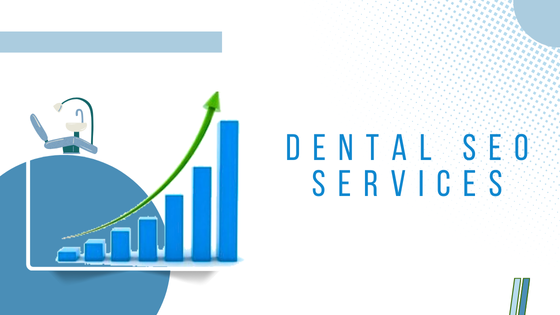In 2025, dental practices face a digital landscape that’s more competitive, fragmented, and fast-moving than ever. Gone are the days when ranking on Google was enough to guarantee new patients. Today, SEO isn’t just about visibility—it’s about conversion, trust, and strategic positioning. If your practice isn’t investing in modern dental SEO, you’re not just invisible. You’re losing patients to competitors who understand how search drives growth.
The Shift: From Rankings to Revenue
Most dentists still think of SEO as a technical checklist: keywords, backlinks, and maybe a blog post or two. But in 2025, SEO is a full-funnel strategy. It’s about showing up when high-intent patients are searching—and giving them a reason to choose you.
Consider this: a patient searching “emergency dentist near me” isn’t browsing. They’re in pain, on their phone, ready to book. If your site doesn’t appear in the top results, or worse—if it loads slowly, lacks clear service menus, or doesn’t have a click-to-call button—you’ve lost them. SEO today is about capturing that moment and converting it.
Local SEO Is No Longer Optional
Google’s local algorithm has evolved. Proximity, relevance, and prominence now determine who shows up in the coveted 3-pack. That means your Google Business Profile, reviews, and location pages must be optimized with precision.
In 2025, dental marketers are using geo-targeted content, structured data, and hyperlocal landing pages to dominate zip codes. If your practice serves multiple neighborhoods or offers niche services like pediatric or cosmetic dentistry, you need segmented pages that speak directly to those audiences. Generic “About Us” copy won’t cut it.
Patients Are Smarter—and More Skeptical
Today’s patients research before they book. They compare reviews, scan service menus, and judge your credibility based on your website’s clarity and tone. If your site reads like a template, they’ll bounce. If your blog is stuffed with generic advice like “brush twice a day,” they’ll tune out.
Modern dental SEO includes content strategy. That means writing service pages that answer real questions, using patient-friendly language, and building trust through authority signals—like before-and-after galleries, provider bios, and FAQs. It’s not just about keywords. It’s about connection.
Mobile-First or Missed Opportunity
Over 70% of dental searches now happen on mobile. If your site isn’t lightning-fast, mobile-optimized, and conversion-ready, you’re leaking leads. In 2025, Google’s Core Web Vitals are more than ranking factors—they’re patient experience metrics.
Dental marketers are auditing sites for speed, usability, and conversion friction. That means fixing slow load times, simplifying navigation, and ensuring every page has a clear call to action. Whether it’s “Book Now,” “Call Us,” or “Get a Free Consultation,” your site should guide users like a well-trained front desk.

SEO Powers Every Other Channel
Think SEO is just for Google? Think again. Your paid ads, social media, and email campaigns all perform better when your site is optimized. Why? Because SEO improves page quality, relevance, and user experience—factors that lower ad costs and boost engagement.
In fact, many dental marketers now use SEO data to inform ad targeting, content creation, and even offline campaigns. Keyword research reveals what patients care about. Analytics show which services convert. SEO isn’t a silo—it’s the foundation.
Reputation Is the New Ranking Factor
In 2025, Google weighs your reputation heavily. That means reviews, citations, and consistency across platforms matter more than ever. A practice with 200 five-star reviews and a well-maintained Google profile will outrank a technically perfect site with no social proof.
Dental SEO now includes reputation management. That means asking for reviews, responding to feedback, and syndicating your presence across directories like Healthgrades, Yelp, and Zocdoc. It’s not just about being found—it’s about being trusted.
SEO Is Cheaper Than Ads—and More Sustainable
Paid ads can drive traffic fast, but they’re expensive and temporary. SEO builds equity. A well-optimized site continues to attract patients long after the campaign ends. And unlike ads, organic traffic converts better—because it’s earned, not bought.
Dental marketers often recommend a hybrid approach: use ads for immediate visibility, but invest in SEO for long-term growth. Practices that do both see compounding returns. Those that ignore SEO stay stuck in the pay-per-click hamster wheel.
Work With the Best Dental Marketers
Whether you’re a solo practitioner or a multi-location group, partnering with experts like Best Results Dental Marketing can help you build a strategy that drives measurable growth—not just traffic. As one of the best dental marketers in the industry, they specialize in full-funnel SEO that turns clicks into booked appointments. From service menus to meta descriptions, their team knows how to optimize every step of the patient journey.
Conclusion
If your dental practice isn’t investing in SEO in 2025, you’re not just missing out on rankings. You’re missing out on patients. SEO is no longer a luxury—it’s a necessity. It powers visibility, trust, and conversion. And it’s the only channel that works 24/7, even when your office is closed.



